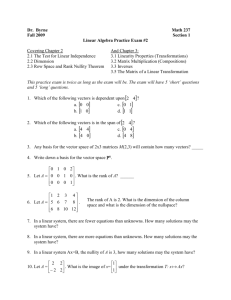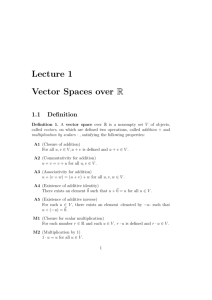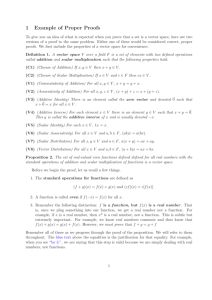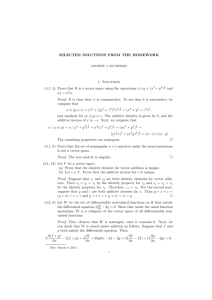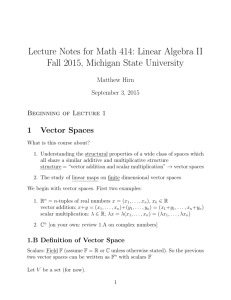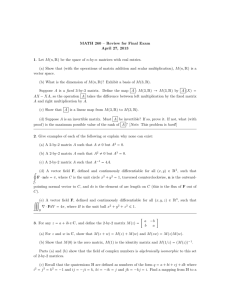Theorem: The smallest possible set that contains ½ and is closed
advertisement
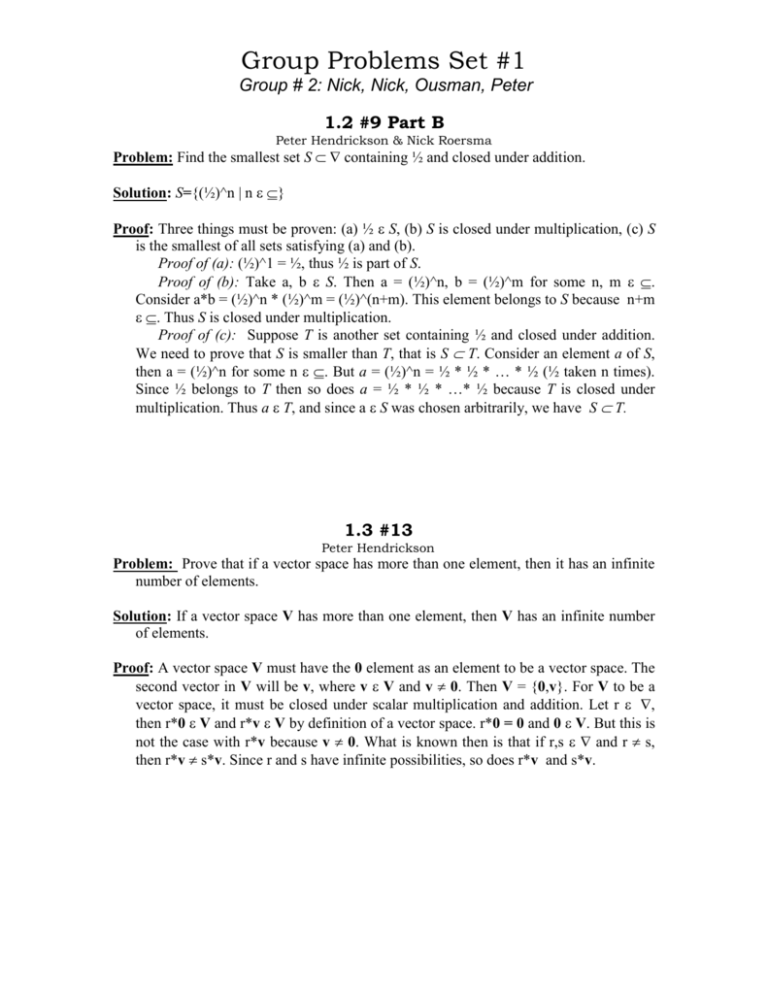
Group Problems Set #1
Group # 2: Nick, Nick, Ousman, Peter
1.2 #9 Part B
Peter Hendrickson & Nick Roersma
Problem: Find the smallest set S containing ½ and closed under addition.
Solution: S={(½)^n | n }
Proof: Three things must be proven: (a) ½ S, (b) S is closed under multiplication, (c) S
is the smallest of all sets satisfying (a) and (b).
Proof of (a): (½)^1 = ½, thus ½ is part of S.
Proof of (b): Take a, b S. Then a = (½)^n, b = (½)^m for some n, m .
Consider a*b = (½)^n * (½)^m = (½)^(n+m). This element belongs to S because n+m
. Thus S is closed under multiplication.
Proof of (c): Suppose T is another set containing ½ and closed under addition.
We need to prove that S is smaller than T, that is S T. Consider an element a of S,
then a = (½)^n for some n . But a = (½)^n = ½ * ½ * … * ½ (½ taken n times).
Since ½ belongs to T then so does a = ½ * ½ * …* ½ because T is closed under
multiplication. Thus a T, and since a S was chosen arbitrarily, we have S T.
1.3 #13
Peter Hendrickson
Problem: Prove that if a vector space has more than one element, then it has an infinite
number of elements.
Solution: If a vector space V has more than one element, then V has an infinite number
of elements.
Proof: A vector space V must have the 0 element as an element to be a vector space. The
second vector in V will be v, where v V and v 0. Then V = {0,v}. For V to be a
vector space, it must be closed under scalar multiplication and addition. Let r ,
then r*0 V and r*v V by definition of a vector space. r*0 = 0 and 0 V. But this is
not the case with r*v because v 0. What is known then is that if r,s and r s,
then r*v s*v. Since r and s have infinite possibilities, so does r*v and s*v.
